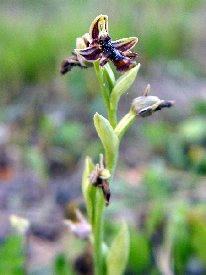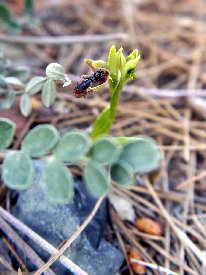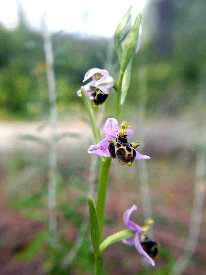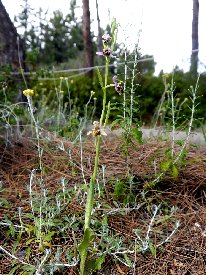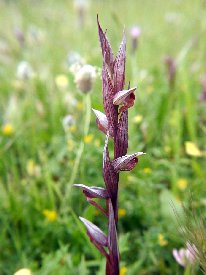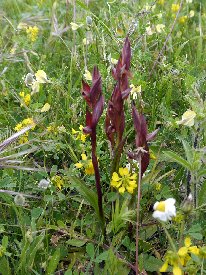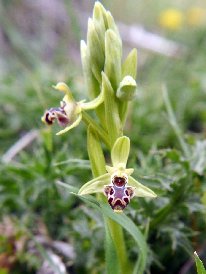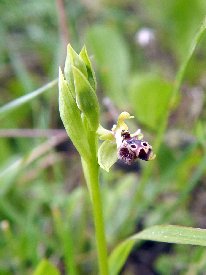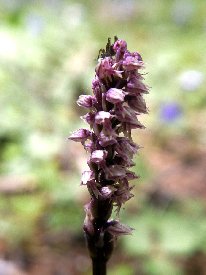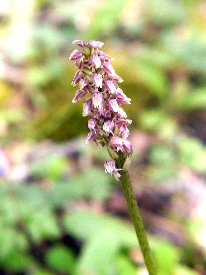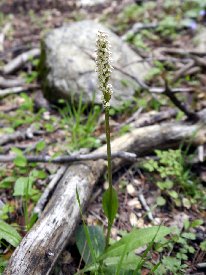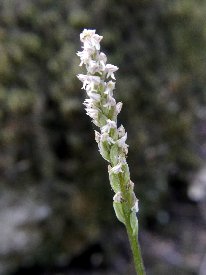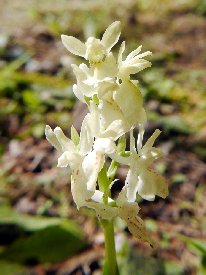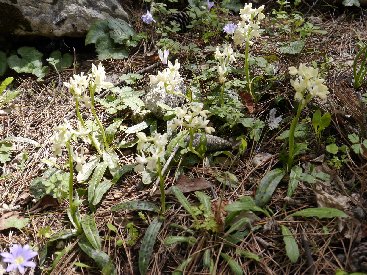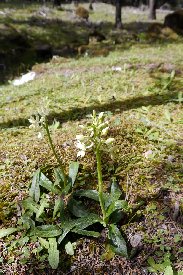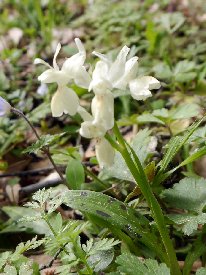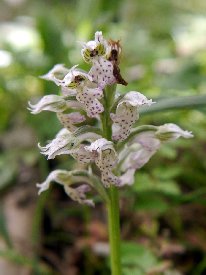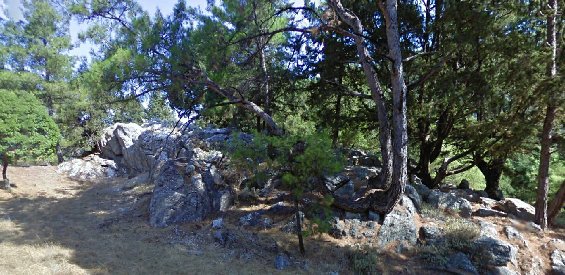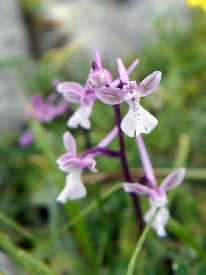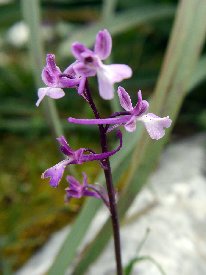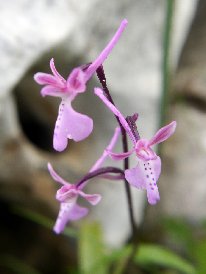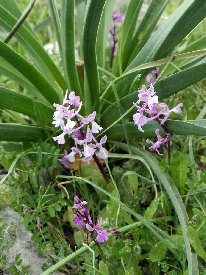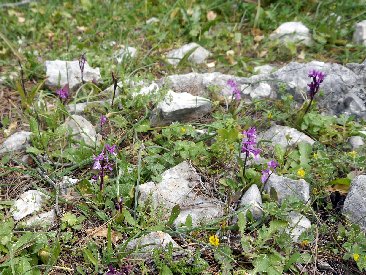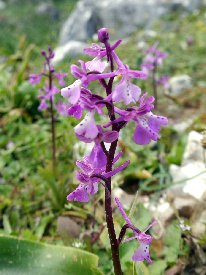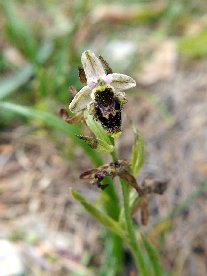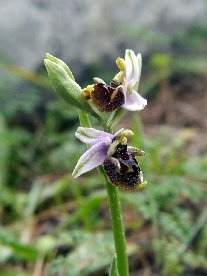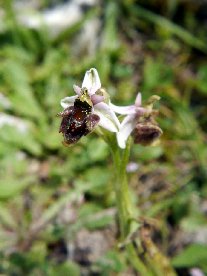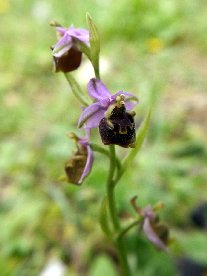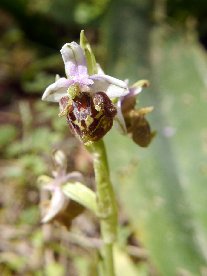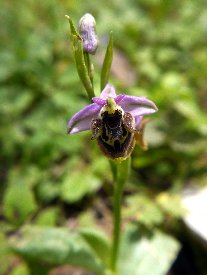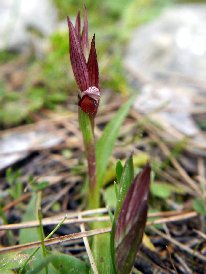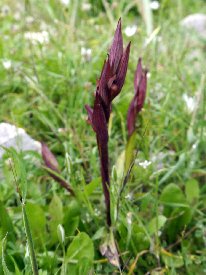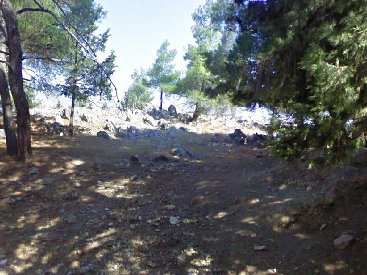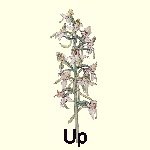|
|
||||||||||
|
|
||||||||||
 |
|
Ancient Kamiros 5th April 2023 (36°20'7.46"N 27°55'13.54"E) Rhodes Day 1 Primarily we are here to see the 8,000 year old remains of this Doric town, but there is a good chance of orchids. There is a long uphill central path past buildings on both sides, but it is not untill we get to the top that the first orchid sign is spotted. Unfortunately it had gone over several days ago. However a search in the vicinity reveals that it is Ophrys ferdinand-regis, with some plants still in flower. More of these were found right at the top left of the site beyond the Temple of Athena. Pedersen places this species as a Ophrys speculum ssp. ferdinand-regis. This is one of my must see species, but seems rattier in the flesh than many of the photos. We take to referring to it as the Earwig Orchid. Salakos 5th April 2023 (36°17'10.71"N 27°56'6.61"E) This is a layby with a panoramic view over the valley and village of Salakos. Most noticable are the tongue orchids, Serapsias bergonii. All very deeply red coloured. Sometimes I find the species in this genus difficult to differentiate, but I am reasonably confident with this identification. Profitas Ilias site 1 5th April 2023 (36°16'34.61"N 27°55'58.75"E) We are up into the hills proper now, and find a place to pull over off the road without getting wheels stuck in a ditch. This is a sloping pine forest with some rather large limestone rocks dotted about and piled up. First species spotted is Neotinea maculata, the Dense-flowered Orchid, and these give a quite different impression to those we saw last year in Ireland. Growing from an otherwise bare woodland soil rather than hidden in grass makes them easier to see. The majority have a degree of pink colouration from quite intense markings to a mere flush, but even the white forms seem a brighter white than their Irish relatives. When I took the photo of plant 1 I didn’t notice the cricket nymph sitting on top. Then we spot a species that all the authors agree on and being rare - Orchis provincialis. Not as yellow coloured as in the books, but in a delightful cream colour. Not dissimilar to the O. pauciflora we saw in the Troodos mountains of Crete. They grow in a more open part of the woodland and in rather nice clumps in places. Rounding off this site is a single plant of Orchis lactea. Profitas Ilias site 2 5th April 2023 (36°16'31.64"N 27°58'25.72"E) Next stop is a few miles further down the road past the Swiss chalet style hotel. A strip of pine woodland borders the road here rising to a grassy mound with plenty of rocks. The obvious species here is Orchis anatolica, in all shades from pale pink to purple - with or without a near white lip. The stem however, is always a deep intense reddish purple. Again a species happy to grow in clumps. Next are the Ophrys growing there, and this is where identification becomes tricky. It is not helped by some of them going over, or by the authors having quite different interpretations. Is there just one entity growing here, or more, or possibly a hybrid too? I see three different shaped lips in these photos, a range of petal size, shape and colour, and ditto for the sepals.From Kreutzschmar photo 1 could be Ophrys dodekanensis, photo 5 Ophrys oestrifers, and photo 6 Ophrys episcopalis. The others could be hybrids or just variations of those species mentioned. Delforge actually does not include Ophrys dodekanensis even as a synonym. His Ophrys episcopalis does not resemble any of these, but Ophrys candica could be photo 6. Pedersen takes a completely different view. These would all be classed as a Ophrys xvicinia, a stablised hybrid between Ophrys fuciflora and Ophrys scolopax. Would that there were more examples there to photograph, or would that merely confuse me even more? The site is rounded off by a scattering of Serapsias bergonii.
|
|
|
||||||||||||||
